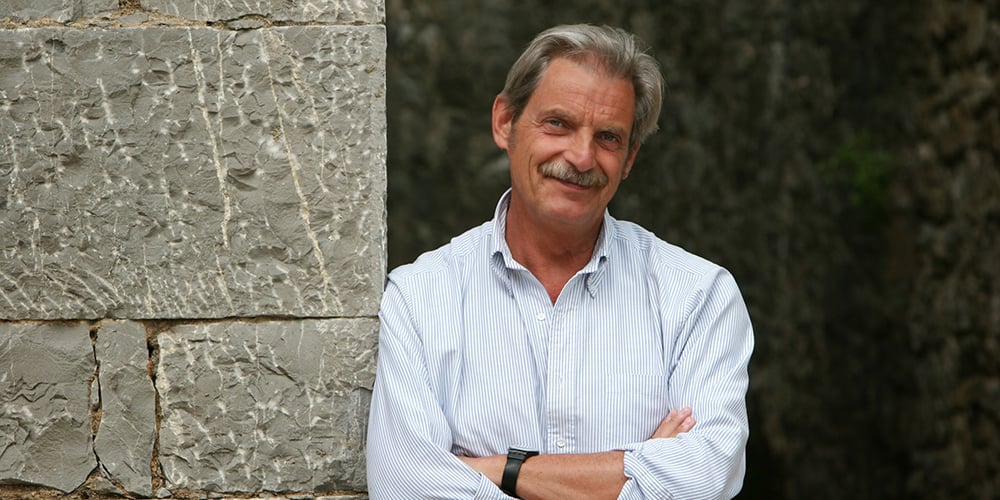Born in 1954, Carlo Ferrini, a full-blooded Tuscan from Florence (and, in addition, a passionate fan of the Florence soccer team), after his studies at the Professional Agricultural Institute of his native city, received a doctor’s degree in agronomy from the University of Florence. And this despite the fact that, at the time, he was far more interested in zootecnics (i.e. animal husbandry), in cows to be precise, than in grapes. Nonetheless, his first professional work was in the laboratory of the Chianti Classico Consortium. After the decision of the Consortium’s oenologist, Maurizio Castelli, to become a consultant, Ferrini moved into his job and spent the 1980’s roaming through the vast space between Florence and Siena, gaining experience in a zone undergoing a profound quality revolution involving both the vineyards and the cellars. A consulting professional himself since 1991, he has been, in all probability, the winemaker with the widest range of action in all of Italy, working virtually from the Austrian border in the north all the way to the island of Pantelleria south of Sicily. The island entered into his sphere of influence in the early years of the new millennium, and has become, over time, one of his principal theaters of action, taking up at least a week per month of his professional time at a series of estates scattered all over the island.
For reasons of space, rather than a detailed analysis of the work carried out with each single house, the interview will concentrate on the territories and their grapes, the potential and the evolution of the wines themselves.
You began your career working as a consultant essentially in Tuscany and with a series of estates – Fonterutoli, Poliziano, Le Corti, La Massa, Brolio, Casanova dei Neri – already prestigious then just as now, how did the decision, i.e. the possibility, of working in Sicily come about.
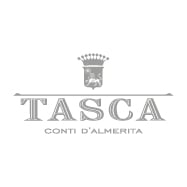 I was contacted by Count Lucio Tasca D’Almerita whose house was already the major private winery in Sicily both in terms of the volume of production and of commercial distribution, data which indicated a notable level of quality and an acute commercial spirit. The count, despite the historic importance and rank of his house, likes to call himself a “wine entrepreneur” and possesses a quality which is indispensable for a man who is looking for important success in the field: dynamism, the desire to constantly improve. The wines were certainly good, often very good, but he was convinced that there was much margin for improvement and hoped I could give him a hand. Perhaps the fact that in a number of Tuscany production situations I had had to manage fairly large numbers in terms of both vineyard surface and bottles produced was in my favor. I have had for clients a certain number of “boutique” wineries, one of my first in fact was Riecine in Gaiole in Chianti, just a few acres and bottles, but I have always thought that a professional demonstrates his true capabilities reconciling quantity and quality, succeeding, where the vineyards are available, in producing significant quantities of wine without sacrificing or compromising quality. Within the limits of what is possible, not all vineyards can give you the grapes for outstanding wine, but we consultants need to make every effort to create wines of much drinking pleasure where an important structure is not possible.
I was contacted by Count Lucio Tasca D’Almerita whose house was already the major private winery in Sicily both in terms of the volume of production and of commercial distribution, data which indicated a notable level of quality and an acute commercial spirit. The count, despite the historic importance and rank of his house, likes to call himself a “wine entrepreneur” and possesses a quality which is indispensable for a man who is looking for important success in the field: dynamism, the desire to constantly improve. The wines were certainly good, often very good, but he was convinced that there was much margin for improvement and hoped I could give him a hand. Perhaps the fact that in a number of Tuscany production situations I had had to manage fairly large numbers in terms of both vineyard surface and bottles produced was in my favor. I have had for clients a certain number of “boutique” wineries, one of my first in fact was Riecine in Gaiole in Chianti, just a few acres and bottles, but I have always thought that a professional demonstrates his true capabilities reconciling quantity and quality, succeeding, where the vineyards are available, in producing significant quantities of wine without sacrificing or compromising quality. Within the limits of what is possible, not all vineyards can give you the grapes for outstanding wine, but we consultants need to make every effort to create wines of much drinking pleasure where an important structure is not possible.
What did you find at Sclafani Bagni where the Tasca d’Almerita vineyards are located?
Obviously many acres of vineyards and a viticulture of a good level, perhaps better than the cellar techniques and practices. The principal objective, discussed and absolutely agreed upon by both of us, was a greater elegance in the wines, it’s pointless to sing, like Nino Manfredi in the film “Bread and Chocolate”, the virtues of “our sun”, “our sea”, the count did not want to be limited by the classically positive features of southern Italian wines, the warmth, the volume and generosity, he wanted more finesse and complexity, more expressiveness. The house, fortunately, had the possibility of achieving these objectives, vineyard altitudes are high indeed and assure good temperature swings from day to night, therefore aroma, and freshness. The Catarratto which is grown at high altitudes, for examples, is in no way similar to that cultivated in the plain. I also had the assistance of a young house oenologist who had studied at Alba, Tonino Guzzo, who, after his experience in the winery, has had quite a successful career as a consultant. There was a strong meeting of minds in terms of intention, our task was to find the cellar procedures and practices, the fermentation and aging procedures to help us center the objectives.
What exactly are we talking about?
Effectively speaking, letting up on the accelerator – the sun, as we all know, is quite present in Sicily, it is very simple for alcohol levels to get a bit out of hand, certain markets, in addition, believe that this is natural and inevitable on the island but it is not so, with more attention to ripeness levels and picking dates it is easily possible to achieve wines which are certainly rich and ample but more balanced and lower in alcohol. Extraction has become more gradual, less vigorous in terms of fermentation temperatures and moving the mass in the tanks, and the aging now uses less new oak and larger formats, I firmly believe in puncheons with a 130 gallon (500 liter) capacity, more than double the standard 60 gallon barrels. In my opinion, there is a better ratio of oak to wine, more balanced, centered, harmonious, and on target.
Aside from modifying the style of the wine, the consulting work involved other questions?
Certainly, we developed other wines to enlarge the product range, Leone Bianco and Lamùri; a classic dry sparkling wine with a longer period of aging on its lees; and sweet wines as well, a Muscat and a Gewürztraminer. And, with the expansion of the house, I have had the possibility of working in new zones with different grape varieties compared to those at Sclafani Bagni: Grillo, a grape variety which I adore and which gives me high hopes for the future; Malvasia on the island of Salina; the wines of Mount Etna, both white and red, produced from vineyards in the zone of Passpisciaro which reach 3000 feet above sea level, one of which, 70 years old, is truly lovely plot; and yet another wine made from the Perricone grape, a “work in progress” about which I would prefer not to comment yet.
 Perhaps at this point I should mention – though the collaboration began later – the wines of Sallier de la Tour, a family which, despite its name and origins in the French Savoy, has been firmly rooted for generations in western Sicily, at Camporeale to be precise. I did not know the area, the estate cultivates an ample gamut of grape varieties, both Sicilian (Inzolia, Grillo, and Nero d’Avola) and French (Syrah, Cabernet Sauvignon, Petit Verdot), and in this case I needed to work with the vineyards which I found in place. The family is related by marriage to the Tasca d’Almerita, who have taken charge of the marketing, I was requested to raise the quality level and, to judge by the commercial results, the estate has by now carved out a solid space for itself on the market. I can say, without a shadow of a doubt, that the variety which gives the finest results is Syrah, the selection – La Monaca – is one of the Sicilian wines which is giving me the greatest satisfaction among the various offerings I am involved with. I am not in a position to explain why from a geological or climatic point of view, I can only say it is so, it appears that Syrah has a very high potential at Camporeale.
Perhaps at this point I should mention – though the collaboration began later – the wines of Sallier de la Tour, a family which, despite its name and origins in the French Savoy, has been firmly rooted for generations in western Sicily, at Camporeale to be precise. I did not know the area, the estate cultivates an ample gamut of grape varieties, both Sicilian (Inzolia, Grillo, and Nero d’Avola) and French (Syrah, Cabernet Sauvignon, Petit Verdot), and in this case I needed to work with the vineyards which I found in place. The family is related by marriage to the Tasca d’Almerita, who have taken charge of the marketing, I was requested to raise the quality level and, to judge by the commercial results, the estate has by now carved out a solid space for itself on the market. I can say, without a shadow of a doubt, that the variety which gives the finest results is Syrah, the selection – La Monaca – is one of the Sicilian wines which is giving me the greatest satisfaction among the various offerings I am involved with. I am not in a position to explain why from a geological or climatic point of view, I can only say it is so, it appears that Syrah has a very high potential at Camporeale.
With this type of commitment of time and energy and so extensive and complex a line of wines, it would appear logical that you had your hands full during your first years in Sicily.
 Yes I did, and the next project I accepted was towards the end of 2004 and the early part of 2005 and, though Nero d’Avola, the principal grape cultivated at Sclafani Bagni, was involved, the production zone was a totally different one, we are talking about the Zisola winery in Noto. I preferred this site when I began to develop the project along with the Mazzei family, proprietors of Castello di Fonterutoli at Castellina in Chianti, with which I was already working. There was a bit of altitude in a zone which was mostly low-lying, greater temperature swings and breeziness. We planted Syrah along with a bit of Tannat and Petit Verdot, to which we have, more recently, added Grillo and Catarratto. The basis of our work, however, was obviously the Nero d’Avola vineyards which we use for our Noto Rosso. The vineyards are all head-pruned bush vines, a training system I use everywhere in Sicily when I can, and here as well we are regularly increasing the use of puncheons compared to the standard 60 gallon format in the cellar to achieve a better balance between wine and oak.
Yes I did, and the next project I accepted was towards the end of 2004 and the early part of 2005 and, though Nero d’Avola, the principal grape cultivated at Sclafani Bagni, was involved, the production zone was a totally different one, we are talking about the Zisola winery in Noto. I preferred this site when I began to develop the project along with the Mazzei family, proprietors of Castello di Fonterutoli at Castellina in Chianti, with which I was already working. There was a bit of altitude in a zone which was mostly low-lying, greater temperature swings and breeziness. We planted Syrah along with a bit of Tannat and Petit Verdot, to which we have, more recently, added Grillo and Catarratto. The basis of our work, however, was obviously the Nero d’Avola vineyards which we use for our Noto Rosso. The vineyards are all head-pruned bush vines, a training system I use everywhere in Sicily when I can, and here as well we are regularly increasing the use of puncheons compared to the standard 60 gallon format in the cellar to achieve a better balance between wine and oak.
Turning once again to the Tasca d’Almerita wines you created together with the house, you cited those produced on Mount Etna, had you previously had the possibility of getting to know the volcano, its grapes, and its wines?
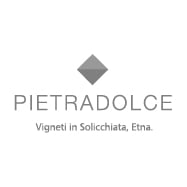 Yes, with a new estate founded in 2005, Pietradolce in Castiglione della Sicilia, where the founders, brothers Michele and Mario Faro, owners of a plant nursery and passionate plant lovers, had decided to accept the challenge of producing wine. The grapes in question – Nerello Mascalese and Carricante – were totally different from those I had worked with elsewhere, but it was the place in which I found myself working which made me fall in love with the zone. The black volcanic soil, the terraces on which the vines were planted, the old bush vines (we have some ancient ungrafted parcels) which go way back in time, the altitudes, which reach close to 3000 feet above sea level: all this is a powerful emotion for those who work in the world of wine and, if I have contributed in some way to the rebirth of this truly unique area, it can only be immensely satisfying. I had the possibility of starting from scratch, there were the vineyards, which by now have reached over 32 total acres, but the organization of the line was my responsibility, obviously together with the producers, and it was done in the most classic way possible. We created a regular white wine and a selection, a rosé, and four red wines: a regular bottling, a selection of better lots from various vineyard sources (the house owns two parcels in Contrada Rampanti and another in Contrada Zottoinotto), and two wines based on selection from precise vineyard spots, Contrada Rampante and Vigna Barbagalli, the last an authentic cru.
Yes, with a new estate founded in 2005, Pietradolce in Castiglione della Sicilia, where the founders, brothers Michele and Mario Faro, owners of a plant nursery and passionate plant lovers, had decided to accept the challenge of producing wine. The grapes in question – Nerello Mascalese and Carricante – were totally different from those I had worked with elsewhere, but it was the place in which I found myself working which made me fall in love with the zone. The black volcanic soil, the terraces on which the vines were planted, the old bush vines (we have some ancient ungrafted parcels) which go way back in time, the altitudes, which reach close to 3000 feet above sea level: all this is a powerful emotion for those who work in the world of wine and, if I have contributed in some way to the rebirth of this truly unique area, it can only be immensely satisfying. I had the possibility of starting from scratch, there were the vineyards, which by now have reached over 32 total acres, but the organization of the line was my responsibility, obviously together with the producers, and it was done in the most classic way possible. We created a regular white wine and a selection, a rosé, and four red wines: a regular bottling, a selection of better lots from various vineyard sources (the house owns two parcels in Contrada Rampanti and another in Contrada Zottoinotto), and two wines based on selection from precise vineyard spots, Contrada Rampante and Vigna Barbagalli, the last an authentic cru.
The fermentation and aging are classic as well: in stainless steel tanks both for the Carricante and Nero d’Avola for the fermentation, in stainless steel for the aging of the white wines and in puncheons for the aging of the reds but with only 30% of new oak in this latter case. These wines must be the purest possible expression of the volcano, we have no desire to either add or subtract anything whatsoever, we need to place our energies and professional knowledge at the service of vineyards which do not resemble any others in the entire world. For us, working here is a true privilege.
Have you had the possibility of working in the most historic zone of Sicily, the province of Trapani, in particular the area where Marsala is produced?
 Indeed, in a more recent project with the Rallo winery, even though the original proprietors, the Rallo family, sold the house to the Vesco in 1996. I am not involved with the fortified wines, merely with the red and white table wines produced from the grapes grown on their estate in the Alcamo area. This part of the island has always based its work on white wines, and we continue to uphold this tradition, there is a blend of Nero d’Avola and international grape varieties and a 100% Nero d’Avola aged in oak, but the largest part of our work consists of the production of white wines with the familiar names of Sicily’s historic white varieties: Grillo, Insolia, and Catarratto. Which here have found an ideal spot to be cultivated, we have vineyards as high as 1650 feet above sea level which give us excellent temperature swings, the weather in fact is so fine that we can practice an organic viticulture, and the progress we have made over the last few years has been notable indeed, as is the case in much of Sicily. In the beginning there was a sense in Sicily that the island’s producers were searching for – at times a bit uncertainly – a concept of quality to adopt and make their own. Many unfortunately thought they should satisfy certain expectations on the part of the market, but now there is a greater familiarity with the grapes and the various territories in which they are cultivated, and the aim now is to succeeded in letting variety and territory express themselves as well as possible.
Indeed, in a more recent project with the Rallo winery, even though the original proprietors, the Rallo family, sold the house to the Vesco in 1996. I am not involved with the fortified wines, merely with the red and white table wines produced from the grapes grown on their estate in the Alcamo area. This part of the island has always based its work on white wines, and we continue to uphold this tradition, there is a blend of Nero d’Avola and international grape varieties and a 100% Nero d’Avola aged in oak, but the largest part of our work consists of the production of white wines with the familiar names of Sicily’s historic white varieties: Grillo, Insolia, and Catarratto. Which here have found an ideal spot to be cultivated, we have vineyards as high as 1650 feet above sea level which give us excellent temperature swings, the weather in fact is so fine that we can practice an organic viticulture, and the progress we have made over the last few years has been notable indeed, as is the case in much of Sicily. In the beginning there was a sense in Sicily that the island’s producers were searching for – at times a bit uncertainly – a concept of quality to adopt and make their own. Many unfortunately thought they should satisfy certain expectations on the part of the market, but now there is a greater familiarity with the grapes and the various territories in which they are cultivated, and the aim now is to succeeded in letting variety and territory express themselves as well as possible.
It seems that there are not many areas in Sicily where you have not had the opportunity of exercising your professional skills.
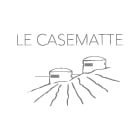 Correct, and one of the least known is the Faro appellation, a postage stamp piece of land near in the city of Messina, the only zone – even if we are talking about very few acres of vineyards – which up until now has given us a Nerello Mascalese capable of competing with that of the major red wines of Mount Etna. With the obvious differences, clearly, one of which is the presence of the Nocera grape in the blend. I have had, in this case, that of the Le Casematte winery, the pleasure of working in a spot with a breathtaking view over the Straits of Messina, Homer’s Scylla and Charybdis below, and the city of Reggio Calabria across the water which seems so close that it can be touched. The owner, a Sicilian CPA in love, to be truthful virtually obsessed, with wine has created an entire new life for himself in this isolated spot, some 1650 feet above sea level, and works with a passion which is truly moving. We began with red wine, we now have as well a Grillo and Carricante-based white, and the wines have become increasingly elegant with every passing year.
Correct, and one of the least known is the Faro appellation, a postage stamp piece of land near in the city of Messina, the only zone – even if we are talking about very few acres of vineyards – which up until now has given us a Nerello Mascalese capable of competing with that of the major red wines of Mount Etna. With the obvious differences, clearly, one of which is the presence of the Nocera grape in the blend. I have had, in this case, that of the Le Casematte winery, the pleasure of working in a spot with a breathtaking view over the Straits of Messina, Homer’s Scylla and Charybdis below, and the city of Reggio Calabria across the water which seems so close that it can be touched. The owner, a Sicilian CPA in love, to be truthful virtually obsessed, with wine has created an entire new life for himself in this isolated spot, some 1650 feet above sea level, and works with a passion which is truly moving. We began with red wine, we now have as well a Grillo and Carricante-based white, and the wines have become increasingly elegant with every passing year.
Enough by now?
 By no means, I have returned to the site of the crime, so to speak, to Camporeale, near the property of Sallier de la Tour, a zone which I obviously know very well, and to a house – Alessandro di Camporeale – with generations of history, beginning in the early 1900’s, behind it. But a decision was taken to try to shift into higher gear, and the cellars, completely redone and renovated during the very first years of the new millennium, are very well equipped, and the viticulture is organic and entirely manual. In addition to a bit of Sauvignon, Grillo and Catarratto, all produced and aged in stainless steel tanks, the largest part of the production consists of red wine, Nero d’Avola and Syrah. I have been greatly rewarded by the quality expressed by the latter grape in this part of the upper Belice valley, the vineyards are on the hills above the Mandranova plain and they seem to have an very important potential for this French grape variety. In addition to the Sallier de la Tour wine which I have already cited, I know that the Syrah is one of the important offerings of the nearby Rapitalà estate where French influence is certainly very much felt, the late owner was married to a Frenchman and their son is bi-lingual and bi-cultural. As is usually the case, singling out one sole factor for the results is not possible, it is clearly the synergy between soil and climate, but I feel free to say that this spot has by now firmly established itself as a prime source for fine Sicilian Syrah.
By no means, I have returned to the site of the crime, so to speak, to Camporeale, near the property of Sallier de la Tour, a zone which I obviously know very well, and to a house – Alessandro di Camporeale – with generations of history, beginning in the early 1900’s, behind it. But a decision was taken to try to shift into higher gear, and the cellars, completely redone and renovated during the very first years of the new millennium, are very well equipped, and the viticulture is organic and entirely manual. In addition to a bit of Sauvignon, Grillo and Catarratto, all produced and aged in stainless steel tanks, the largest part of the production consists of red wine, Nero d’Avola and Syrah. I have been greatly rewarded by the quality expressed by the latter grape in this part of the upper Belice valley, the vineyards are on the hills above the Mandranova plain and they seem to have an very important potential for this French grape variety. In addition to the Sallier de la Tour wine which I have already cited, I know that the Syrah is one of the important offerings of the nearby Rapitalà estate where French influence is certainly very much felt, the late owner was married to a Frenchman and their son is bi-lingual and bi-cultural. As is usually the case, singling out one sole factor for the results is not possible, it is clearly the synergy between soil and climate, but I feel free to say that this spot has by now firmly established itself as a prime source for fine Sicilian Syrah.
A true tour de force, when do you find the time to catch your breath?
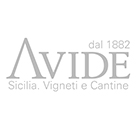 It is going to be even more difficult in the near future because I have just closed the circle with an agreement to assist the work of a house in the province of Ragusa, Avide, a producer since the late 19th century with headquarters and vineyards at Comiso to the northeast of the city of Vittoria. I’ve been there only a short time, but I will have the possibility of trying to realize a Nero d’Avola which is much different from those previously fermented and aged due to the difference in the soils, rather sandy in composition, but above all of trying my hand with the Frappato grape, a variety which – justly – is arousing great interest for its undeniable personality, lovely aromas , andsucculent fruit. Sicily has given me much, and I attempt to repay it with the maximum contribution which close to 40 years of professional work allow me to give.
It is going to be even more difficult in the near future because I have just closed the circle with an agreement to assist the work of a house in the province of Ragusa, Avide, a producer since the late 19th century with headquarters and vineyards at Comiso to the northeast of the city of Vittoria. I’ve been there only a short time, but I will have the possibility of trying to realize a Nero d’Avola which is much different from those previously fermented and aged due to the difference in the soils, rather sandy in composition, but above all of trying my hand with the Frappato grape, a variety which – justly – is arousing great interest for its undeniable personality, lovely aromas , andsucculent fruit. Sicily has given me much, and I attempt to repay it with the maximum contribution which close to 40 years of professional work allow me to give.
by Daniel Thomases




